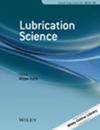High-Throughput Molecular Dynamics Calculations and Machine Learning Prediction of the Adsorption Properties of Ammonium Phosphate Esters on Metal Surfaces
Abstract
In this study, we employed high-throughput all-atom molecular dynamics simulations to calculate the adsorption properties of various carbon chain lengths and branching forms of phosphate ester anions on metal surfaces. Two layers of high-throughput concurrent parallel algorithms were applied in the calculations. The results indicate that both chain length and branching forms influence the magnitude of the adsorption free energy. Longer carbon chains result in larger adsorption free energy, while more complex branching forms lead to smaller adsorption free energy. The analysis suggests that chain length and branching complexity have dual effects. As the carbon chain length increases, on the one hand, more adsorption sites between the molecule and the metal substrate are created, thereby increasing the adsorption free energy. On the other hand, more chemical bonds exist between adsorption sites, enhancing the pulling forces between atoms and reducing the adsorption effect. Furthermore, we employed a machine learning approach to establish a quantitative relationship between descriptors of phosphate ester anions and adsorption free energy. This work offers a universal high-throughput computational approach and machine learning prediction strategy for the molecular dynamics calculations of the adsorption properties of organic molecules on metal surfaces.

 求助内容:
求助内容: 应助结果提醒方式:
应助结果提醒方式:


